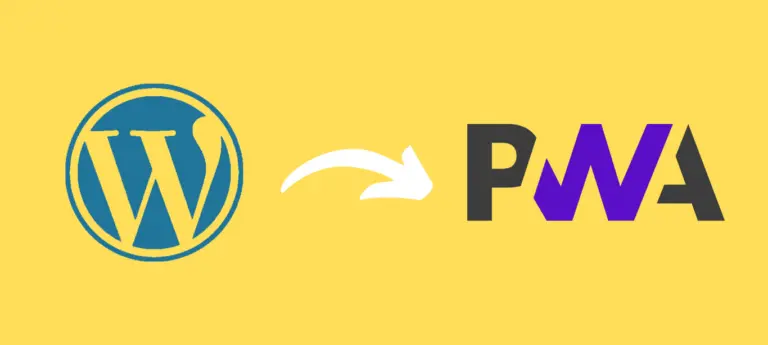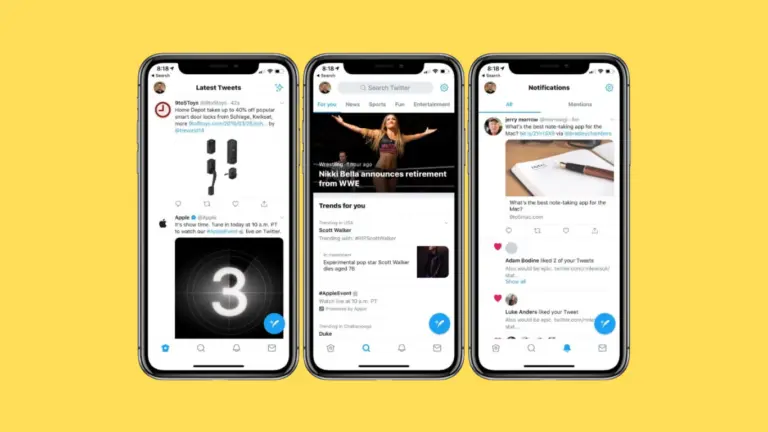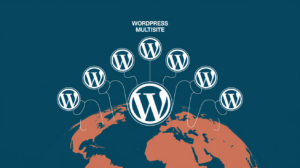
Progressive Web Apps (PWAs) are revolutionizing the mobile-first world by seamlessly merging the best of websites and native apps. With an expected growth rate of around 25% to 30% annually, PWAs are transforming user experiences.
If you’re running a WordPress site and want to supercharge engagement, conversions, and performance, converting your WordPress site to a PWA is the next step. But what exactly is a PWA, and how do you make the switch? Let’s dive in and turbocharge your WordPress site!
What is a Progressive Web App (PWA)?

A Progressive Web App (PWA) is a type of application that combines the best features of both websites and native apps. It delivers a native app-like experience to users while maintaining the simplicity and accessibility of a website. Think of popular platforms like Twitter Lite, Spotify Web, or Bard AI. These services function seamlessly on mobile devices and provide smooth offline usage, push notifications, and the ability to be installed on home screens without visiting an app store.
PWAs are fast, reliable, and installable, making them an excellent choice for businesses looking to increase customer engagement and improve the user experience. Furthermore, they take up much less space than native apps and update quickly, creating an optimal experience for users on both mobile and desktop platforms.

For example, the impact of Twitter Lite was impressive:
- 250,000 unique daily users launched it 4 times a day from the home screen.
- Bounce rate decreased by 20% due to web push notifications.
- Tweets sent increased by 75%.
- Pages per session grew by 65%.
What’s the Big Deal with PWAs?
Before we jump into the how-to, let’s break down why PWAs are causing such a buzz in the web development world:
- Lightning-Fast Load Times: PWAs are designed to be blazingly quick, even on slow connections.
- Offline Functionality: Users can access your content even without an internet connection.
- App-Like Experience: PWAs are installable which look and feel like native apps, complete with home screen icons and full-screen mode.
- Push Notifications: Engage users with timely updates, just like a native app.
- Cross-Platform Compatibility: One PWA works on all devices and operating systems.
- Discoverability: Unlike native apps, PWAs are indexed by search engines.
- Auto-Updates: No need for users to manually update—PWAs refresh in the background.
Prepping Your WordPress Site for PWA Conversion
Before you start the conversion process, make sure your WordPress site meets these requirements:
- WordPress Version: 5.0 or higher (though the latest version is always recommended).
- PHP Version: 7.0 or higher.
- HTTPS: Your site must be served over a secure connection.
- Responsive Theme: Ensure your WordPress theme is mobile-friendly and responsive.
The Two Paths to PWA Conversion
When it comes to converting your WordPress site to a PWA, you’ve got two main options: the DIY developer route or the plugin express lane. Let’s explore both:
Option 1: Manual Development of a WordPress PWA

For businesses with more complex needs or specific customization requirements, manual PWA development is a viable option. Here’s a high-level overview of the process:
- Create a Manifest File: This JSON file tells browsers about your app and how it should behave when installed.
- Implement Service Workers: These JavaScript files run in the background, enabling features like offline functionality and push notifications.
- Add to Homescreen Functionality: Implement the logic to prompt users to install your PWA.
- Optimize for Performance: Use techniques like code splitting and lazy loading to ensure your PWA loads fast.
- Implement Offline Support: Create fallback pages or cache strategies for offline use.
- Enable Push Notifications: Integrate the Web Push API to send notifications to your users.
While this approach offers maximum flexibility, it requires a solid understanding of modern web development practices and PWA technologies. Let’s explore the most popular technologies for building WordPress PWAs.
- Angular: A popular framework maintained by Google, Angular is ideal for building fast, feature-rich PWAs. It simplifies the process of adding new functionalities, making it a go-to for many developers.
- React: Another leading JavaScript framework, React is favored for its flexibility and ease of use. It’s especially popular for building interactive user interfaces, and it also has a large library of components specifically designed for PWA development.
- Vue.js: This lightweight framework is known for its speed and simplicity. Vue.js is an excellent choice for smaller projects or businesses looking to develop PWAs with quick turnaround times.
For most businesses, however, building a PWA from scratch is a time-consuming and costly process, which brings us to the second option.
Option 2: Using Plugins to Build a WordPress PWA
For those looking for a quicker solution, several WordPress plugins can help you convert your site to a PWA with just a few clicks. Here are some top contenders:

This plugin allows you to create a PWA with features like offline pages, “Add to Home Screen” prompts, and aggressive caching. Super PWA also offers a paid PRO version, which includes extra features like data analytics and QR code generators.

This feature-rich plugin supports multisite installations, caching strategies, and app banners. It also offers a premium version with additional functionalities like multilingual compatibility and pull-to-refresh features.

Despite being slightly outdated, this plugin is still favored for its simplicity and support for push notifications. It’s ideal for businesses that want a light and easy-to-use interface.
- OneSignal – Web Push Notifications:
While not strictly a PWA conversion plugin, OneSignal adds valuable push notification functionality to your WordPress site. It allows you to send targeted notifications to your users, increasing engagement even when they aren’t actively browsing your site.
To use these plugins, simply install and activate them from your WordPress dashboard, then follow the setup wizard to configure your PWA settings.
Supercharging Your PWA: Advanced Tips
Once you’ve got the basics set up, consider these advanced techniques to take your WordPress PWA to the next level:
- Implement App Shell Architecture: Load the basic UI immediately while content populates in the background.
- Use Workbox: This set of libraries from Google can help you implement advanced caching strategies.
- Optimize Images: Use next-gen formats like WebP and implement lazy loading for faster performance.
- Implement Background Sync: Allow users to perform actions offline that sync when they’re back online.
- Add Gesture Navigation: Implement swipe gestures for a more app-like feel.
- Utilize Web Share API: Make it easy for users to share your content across platforms.
Measuring PWA Success
After converting your WordPress site to a PWA, it’s crucial to measure its impact. Keep an eye on these metrics:
- Load Time: Use tools like Google PageSpeed Insights to track improvements.
- User Engagement: Monitor time on site, pages per session, and bounce rate.
- Offline Usage: Track how often users access your PWA without an internet connection.
- Install Rate: Measure how many users add your PWA to their home screen.
- Push Notification Engagement: Monitor open rates and click-through rates for push notifications.
Common Pitfalls to Avoid
As you embark on your PWA journey, watch out for these common mistakes:
- Overlooking Content Strategy: A PWA won’t fix poor content. Ensure your site offers value to users.
- Ignoring SEO: Make sure your PWA is still discoverable by search engines.
- Overcomplicating the UI: Keep your PWA interface clean and intuitive.
- Neglecting Testing: Test your PWA across multiple devices and networks to ensure consistent performance.
- Forgetting About Analytics: Implement proper tracking to measure your PWA’s success.
The Future is Progressive
Converting your WordPress site to a PWA isn’t just about keeping up with trends—it’s about providing the best possible experience for your users. By combining the reach of the web with the engagement of native apps, PWAs offer a powerful solution for businesses looking to boost their online presence.
So, are you ready to take your website to the next level? At 42Works, we specialize in creating advanced digital solutions like Progressive Web Apps to help businesses succeed online. Contact us today to learn how we can help you convert your WordPress site into a PWA and provide an exceptional experience for your users. Why shy? Drop us a Hi!
More Reads:
Progressive Web Apps: Development and Costs
Are Progressive Apps Living up to Their Hype? – 42Works
FAQs
1. What is a Progressive Web App (PWA)?
A PWA is a web application that delivers a native app-like experience to users.
2. Why should I convert my WordPress site into a PWA?
It improves user engagement, speed, and offline functionality.
3. Do I need coding knowledge to create a PWA?
That is not necessarily the case; you can use WordPress plugins for easy conversion.
4. What are the benefits of using a PWA over a native app?
PWAs are faster, lighter, and don’t require app store downloads.
5. How do PWAs improve website performance?
They use caching and service workers to ensure faster load times and offline access.
6. Can PWAs work on all devices?
Yes, PWAs are cross-platform and work on all devices and operating systems.
7. Will my PWA be indexed by search engines?
Yes, unlike native apps, PWAs are discoverable by search engines.
8. What are service workers in a PWA?
Service workers are scripts that enable offline functionality and push notifications.


